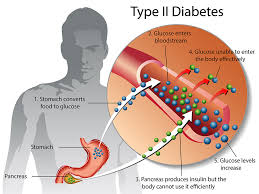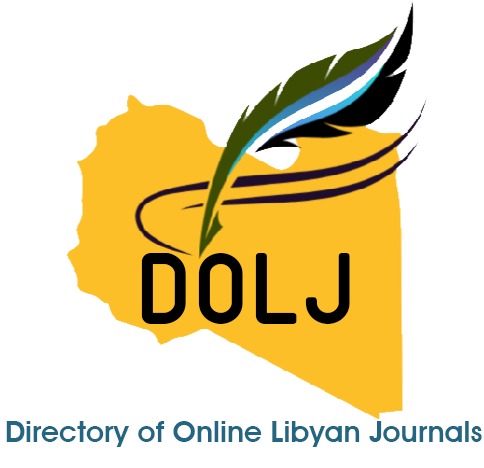Tracking the Burden of Type 2 Diabetes Mellitus Among Libyan Patients in Three Populated Districts of Tripoli, Libya
DOI:
https://doi.org/10.69667/rmj.25408Keywords:
Lipid Profile, Haematological Parameters, Type 2 Diabetes Mellitus, Dyslipidemia, Districts.Abstract
The rising global incidence of Type 2 Diabetes Mellitus (T2DM) is a major contributor to increased morbidity and mortality. Research consistently links type 2 diabetes mellitus (T2DM) with various hematological and lipid abnormalities. However, studies in Libya that examine the relationship between these factors in T2DM patients and correlate them with geographical distribution are scarce. This study aims to evaluate the variations in hematological and lipid profiles among Libyan individuals with type 2 diabetes mellitus (T2DM) and to investigate potential correlations between these parameters. Additionally, it seeks to conduct T2DM surveillance in densely populated regions. A cross-sectional study was conducted at laboratories located in three different districts of Tripoli: Ghout Al Shaal Specialized Hospital, Abu Salim Hospital, and Al Sarai Laboratory in Hay Al Andalus. A total of 261 Libyan participants were divided into 170 patients with type 2 diabetes and 91 non-diabetic (controls), aged 50-85 years. Anthropometric data (weight, height, and body mass index (BMI)) were measured using standard protocols. Complete blood count (CBC) and lipid profile analysis were measured using the Sysmex XP-300 automated hematology analyzer and the Roche Cobas Integra 400 Plus system, respectively. Data were analyzed statistically using GraphPad Prism and SPSS version 27. A p-value of <0.05 was considered statistically significant. -value of <0.05 was considered statistically significant. T2DM subjects exhibited a higher body mass index (BMI) across study groups, genders, and districts (p<0.001) and demonstrated a statistically significant increase in red blood cell (RBC) counts (p=0.018) when compared to controls. Gender analysis indicated that diabetic women had a slightly higher RBC count (p=0.02), while men showed elevated neutrophil percentages (p=0.046). District-specific analyses revealed distinct trends. In Abu Salim, both hemoglobin (Hb) concentrations and RBC counts were high (p=0.036 and p=0.012, respectively). In Hay Al Andalus, mean cell volume (MCV) was significantly lower, and white blood cell (WBC) counts were higher (p=0.031 and p=0.022, respectively). In Ghout Al Shaal, significantly higher neutrophil percentages (p<0.001) and lower lymphocyte percentages (p=0.005) were found among diabetics. Additionally, the diabetic group exhibited substantially high levels of HbA1c, fasting blood sugar (FBS), and triglycerides (TG) (p<0.001). While diabetic women aligned with these trends, the male subgroup displayed similar glycaemic levels but exhibited less pronounced lipid differences. Notably, lipid variances were only observed in Hay Al Andalus; diabetic participants had lower high-density lipoprotein cholesterol (HDL-C) and higher TG (p=0.02 and p=0.001, respectively). T2DM Libyan patients suffer from increased adiposity and poor glycemic control. Distinct lipid abnormalities were also observed among patients, but these are commonly seen in women. Patients in the Hay Al Andalus region had the most devastating dyslipidaemia compared to other districts. Moreover, the observed variations in blood indices may be attributed to chronic inflammation, disease severity, and potential hypoxia, influenced by gender and geographic factors. Our findings may offer valuable guidance for prevention and clinical management strategies for T2DM patients in Tripoli.

Downloads
Published
Issue
Section
How to Cite
Similar Articles
- Mariam Alqasser, Stroke Incidence and Risk Profile in Misrata City: A Retrospective Cross-Sectional Hospital-Based Study from Emergency Medical Records (2019–2020) , Razi Medical Journal: Volume 1, Issue 4, 2025 (October to December)
- Fozia Aborayana, Fadila Elghadban, Souad Aboalqasim, Insulin-Dependent Diabetes Mellitus and the Pregnancy Outcomes: A Retrospective Study in the Pediatrics Department of Tripoli University Hospital – Tripoli, Libya , Razi Medical Journal: Volume 1, Issue 2, 2025
- Fayrouz Khaled, Sarah Mohammed, Investigating the Impact of Creatine and Vitamin C Supplementation on Insulin Sensitivity and Glycated Hemoglobin Levels in Male Rabbits , Razi Medical Journal: Volume 1, Issue 3, 2025
- Adell Abubakeer, Nabel Mansour, The Association Between ABO and Rhesus Blood Groups and Diabetes Mellitus in Libya: A Systematic Review of National Evidence , Razi Medical Journal: Volume 1, Issue 3, 2025
- Md Sayed Ali Sheikh, Umme Salma, Maternal Plasma Lipid Profile as a Potential Risk Factor for Spontaneous Preterm Labor , Razi Medical Journal: Volume 1, Issue 2, 2025
- Al-Khazraji , Rihab Mansoor, Shahad Alwan, Anfal Abed, Alaa Mahmoud, Safaa Ahmed, Emerging Roles of Asprosin and Nesfatin-1 in Uncontrolled Type 2 Diabetes , Razi Medical Journal: Volume 1, Issue 3, 2025
- Hossam Elkaib, Abu Baker Abdulrhman, Ali Elrahal, Parathyroid Hormone, Calcium, and Phosphorus Levels in Chronic Kidney Disease Patients: A Comprehensive Analysis , Razi Medical Journal: Volume 1, Issue 3, 2025
- Ahmed Alsharksi, Abdalla Ali, Adam Mustapha, Muna Alshagmani, Bacterial Profile and Their Antimicrobial Susceptibility Pattern of Isolates Recovered from Intensive Care Units of Libyan Hospitals. , Razi Medical Journal: Volume 1, Issue 3, 2025
- Sara Taeb, Ghufran Dehoom, Khuloud Ajaj, Comparison of the Efficacy of Inositol-Containing Medication Only versus Metformin and Inositol among Libyan Infertile Women with Polycystic Ovarian Syndrome , Razi Medical Journal: Volume 1, Issue 3, 2025
- Raja Moman, Nouralhuda Altair, Abdulkarem Tamer, Amnnah Ghalbun, Nagat EL-Magrahi, Antibiosis of Antibiotics, Honey and Probiotics Related Bacteria to Diabetic Foot Infections , Razi Medical Journal: Volume 1, Issue 1, 2025
You may also start an advanced similarity search for this article.








